The Rise Of Synthetic Drugs In The US: What The Growing Trend Means For Public Health
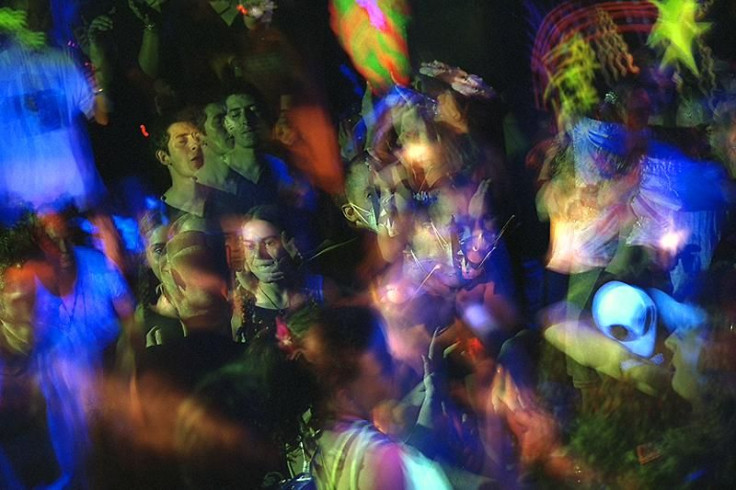
Since their first documented appearance in the United States in 2008, synthetic drugs have created a trend that both authorities and health care officials alike are struggling to contain. Due to the ever-changing formulas of these substances, lawmakers find it difficult to pass all-encompassing legislation that makes these new drugs fully illegal. And with these changing formulas comes new chemical combinations that are unknown, unstudied, and extremely dangerous.
What is a synthetic drug?
The New York Department of Health defines a synthetic drug as a substance that has properties similar to narcotics, or hallucinogens, but features altered chemical structures to avoid penalization by current drug laws. Because of this, the components of synthetic drugs are more difficult to trace and regulate.
Two of the most popular synthetic drugs in this new trend are bath salts and synthetic marijuana, better known by the names Cloud 9 and Spice. Both drugs are alarmingly available to the public, often sold under the guise of incense, potpourri, or other fragrant herbs marked “not for consumption.” In the case of synthetic marijuana, chemical mixtures are sprayed on dried plant material to mimic the effects of THC, the main psychoactive ingredient in regular marijuana. Bath salts, on the other hand, contain a mixture of synthetic chemicals related to cathinone, a stimulant very similar to amphetamines. Long-term health effects of both are still relatively unknown.
Who’s using these drugs?
When it comes to synthetic drug users, an exact number is hard to peg down, but thanks to reports by poison control centers, along with forensic data reports from local laboratories across the United States, we are able to get an idea of how drug use has increased since its start, as well as where use is most concentrated.

Examining reports of calls made to poison control centers, the graphic above shows the vast expansion of synthetic marijuana between the years of 2009 and 2012. In 2009, not a single state had any reports of synthetic marijuana use reaching above the 20 to 100 bracket, but by 2012, many states in the Southwest and East Coast have reports of use within the 450 to 2,266 bracket. According to the CDC’s 2015 Morbidity and Mortality Weekly Report, this year saw a 229 percent increase in calls made to poison control centers, rising from 1,085 calls between January and May in 2014 to 3,572 calls.
Previous reports from the Monitoring the Future Study in 2012 seem to support this growth also, finding that synthetic marijuana became the second highest abused drug among adolescents, at 11.3 percent, trailing marijuana use at 36.4 percent.
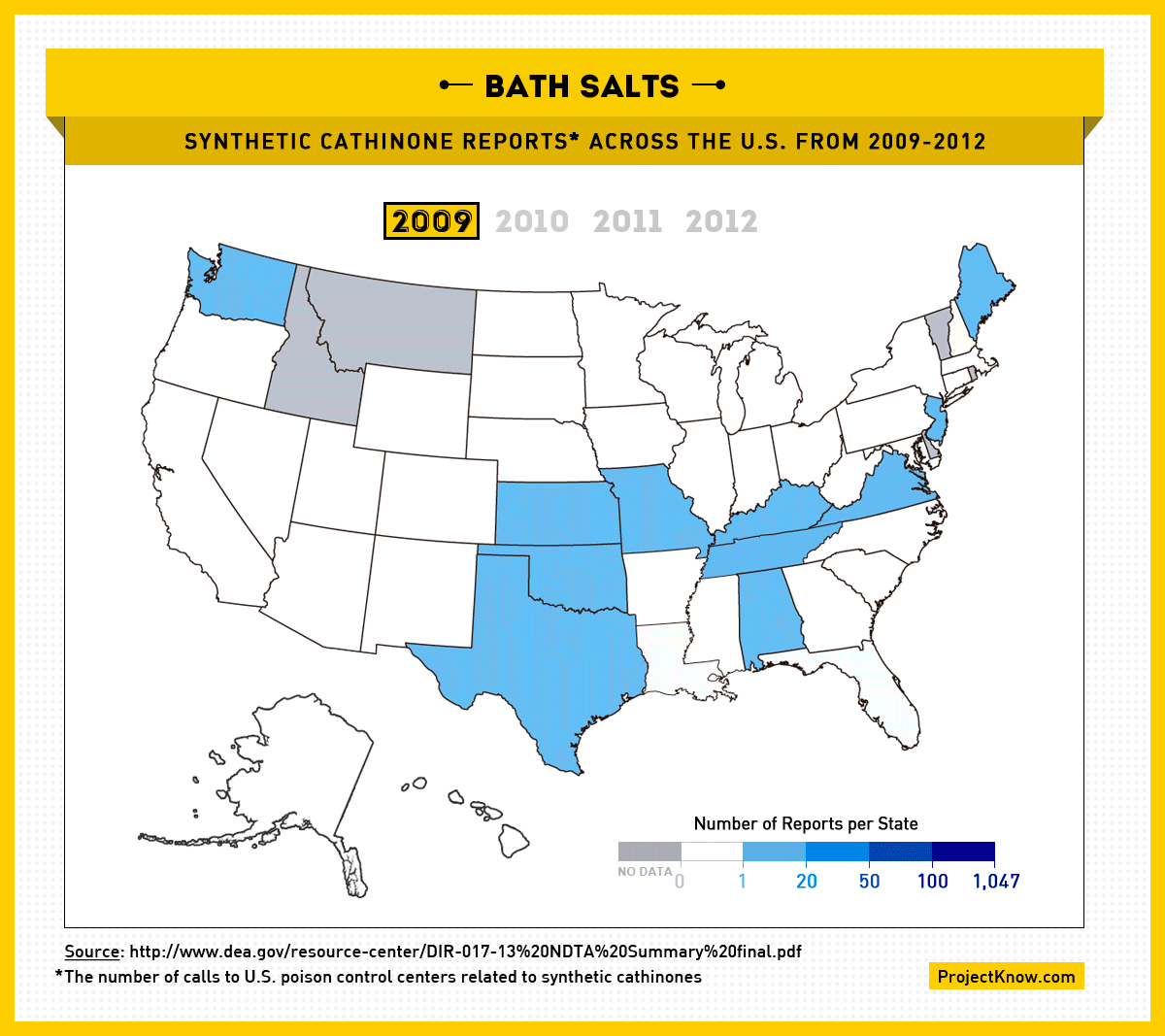
Reports from poison control centers on bath salts also saw an extreme increase between the years 2009 and 2012. Even when relatively new, a few states in 2009 had seen almost 20 reports of abuse. But by 2012, it had become an issue reaching both coasts, although most of it was concentrated in the midwest — in all, a dramatic jump occurred within the 100 to 1,047 bracket.
A 2013 report by the Substance Abuse and Mental Health Services Administration (SAMSHA) estimated that 22,904 hospital visits were caused by bath salts. Out of this total, 67 percent of cases found that bath salts were being used in conjunction with another drug, and 15 percent of the time that other drug was synthetic marijuana.

When it comes to reports to posion control of exposure, but not abuse, the above graph details how use via ingestion, inhalation, or absorption has increased since 2012. A steady increase between January 2012 and December 2013 began to shift to a steeper incline in April 2014, and finally led to a dramatic jump in March and April 2015. During this jump, the number of medical emergencies related to Spice increased from 269 to 1,512. Many blame this escalation on Spice’s latest formula, consisting of MAB-CHIMINACA, a relatively unknown but dangerous chemical compound.
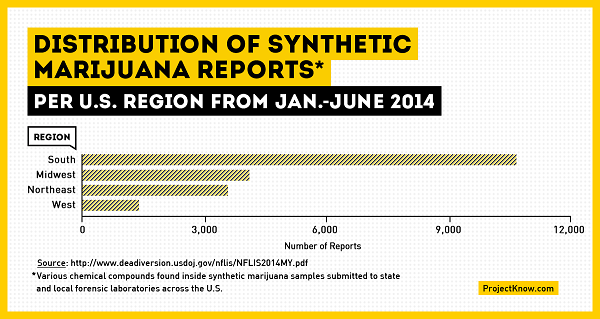
When it comes to regions of concentration, forensic laboratory reports show the greatest concentration of synthetic drugs is currently found in the southern United States.
What’s happening as a result?
Long-term health effects from these drugs are still pretty much a mystery, but the effects of short-term use, especially since this rapid increase, have been well documented. Some of the most recent stories are pretty terrifying.
One of the main appeals of synthetic marijuana is that it often mimics the high found in its legal counterpart; users report feeling relaxed and happier, sometimes experiencing altered perceptions of reality. DrugAbuse.gov reports that a lot is unknown about how spice affects the brain, but scientists do know that chemical compounds in Spice will bind with the same receptors that THC often effects. However, some of these compounds bind more strongly, making the high more powerful and the outcome less predictable.
As far as short-term health effects, most Spice users who visit poison control centers have a rapid heart rate, instances of agitation, vomiting, confusion, and hallucinations. In few cases, a rise in blood pressure leads to heart attack. Oftentimes users report withdrawal symptoms when they stop using the drug. Heavy metals present in synthetic marijuana tend to be cause for concern as well, leaving health care officials worried about what this drug can do after being in the body long-term.
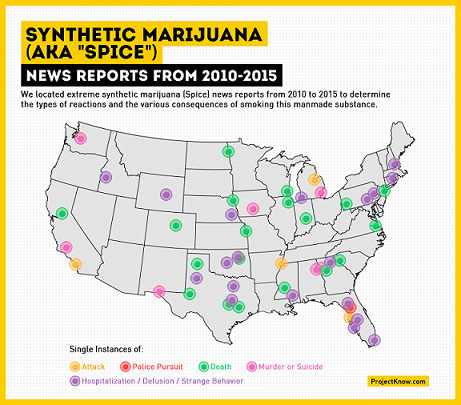
Reports of strange incidents, along with severe, often fatal health outcomes have been frequent among synthetic drug users. In one case, Forbes reports, 15-year-old Kyle Smith of Forest Hill, Md. started experimenting with synthetic marijuana only to experience a prompt psychotic break. By age 18, Smith faced 17 total institutionalizations, along with three suicide attempts and one dose of electroshock therapy.
Emily Bauer, of Cyprus, Texas represents another devastating result of synthetic marijuana. At 16-years-old, Bauer suffered a series of strokes, followed by a medically induced coma after ingesting Spice at a party. A few months after being treated, Bauer was left blind, and partially paralyzed, experiencing debilitating cognitive impairment just from this one incident.
On a broader scale, a report by the National Institute of Health found that 11,406 emergency room visits in 2010 were associated with synthetic marijuana use. An overwhelming amount of these cases were among adolescents, with 75 percent being between the ages of 12 and 29. Interestingly enough, 77.5 percent of these cases involved males while 22.5 percent involved females.
Bath salts also have their fair share of severe health repercussions. Although components vary, many bath salts contain methylenedioxyprovalerone (MDPV), a chemical that acts similarly to amphetamines found in crystal meth and ecstasy. This stimulant often causes feelings of euphoria, due to a surge in dopamine, while rises in serotonin levels also produce hallucinations. Even though some report an increased sex drive and sociability, others experience feelings of paranoia, aggression, and in the most severe cases, psychosis and violent behavior.
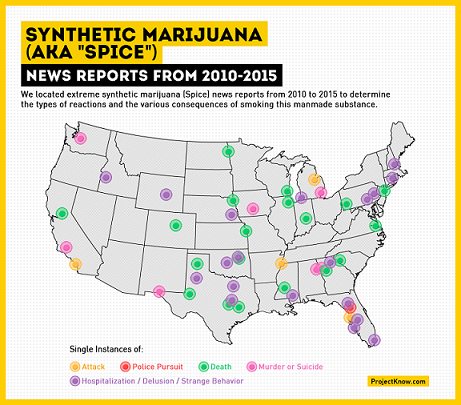
Like synthetic marijuana, bath salt hospital visits are often due to cardiac symptoms like rapid heart rate and high blood pressure. Those going through “excited delirium,” DrugAbuse.gov reports, will often experience dehydration, a breakdown of skeletal muscle tissue, and in some cases, kidney failure.
There is no shortage of horror movie-like stories associated with bath salts. Many are aware of the infamous 2012 Miami “Zombie” Attacks, where a naked man, high on bath salts, chewed on the face of a homeless man in an 18-minute attack. The man was then shot by police, but due to “super human strength” sometimes observed when abusing bath salts, the man was not phased by the gunfire until several shots later.
What are we doing about it?
Since 2008, congress, in collaboration with the DEA and President Obama have pushed to ban these illusive drugs as quickly as possible. The Synthetic Drug Abuse Prevention Act, signed by President Obama in 2012, categorized 26 different types of synthetic cannabinoids and cathinones as schedule 1 drugs. Since then, the DEA has used its emergency scheduling authority to put three more synthetic cathinone compounds on the lists of illegal drugs. State legislation is also taking initiative to control synthetic drugs; 43 states since 2010 have actively pushed through legislation enforcing the illegality of these substances.
Other initiatives are seeking to educate the public, like Minnesota Department of Human Services’ site KnowTheDangers.com. In an effort to “start the conversation” on synthetic drugs, the site offers information about these substances, their known health effects, and how to respond in a situation when the drugs are present. Project Know, another initiative aimed at helping drug addiction more broadly, created the graphics above to raise more awareness about how the epidemic has grown. It also provides services for those suffering with addiction, like help lines and locations of rehab centers.
While synthetic drugs may be one of our most challenging substance abuse epidemics yet, awareness of these drug trends and who it has been effecting may help to curb future devastation. It’s true that we cannot control all of the new forms of drugs constantly being turned, but by educating ourselves to the situation and its repercussions, we can spread the word on why staying away from synthetic drugs is pivotal for the American public.
Published by Medicaldaily.com



























